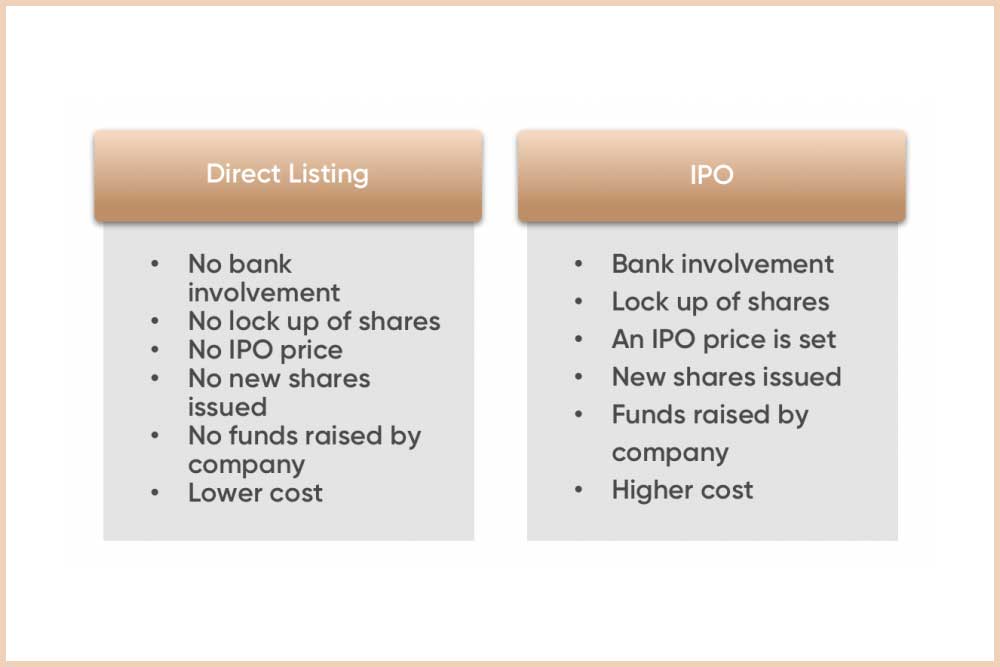A direct listing and an IPO are both ways for a company to become publicly traded, but they differ in several important ways.
In an IPO, the company hires investment banks to underwrite the offering and help to set the price of the shares. The underwriters purchase the shares from the company at a discount and then sell them to investors, typically through a syndicate of brokerage firms. The company receives the proceeds from the offering, minus fees and expenses.
In a direct listing, the company lists its shares directly on a public stock exchange without raising any new capital or using underwriters to facilitate the offering. Instead, existing shareholders, such as employees and early investors, are able to sell their shares directly to the public.
One key difference between a direct listing and an IPO is the way that shares are priced. In an IPO, the price of the shares is typically set by the underwriters based on a variety of factors, including the company’s financial performance, growth prospects, and market conditions. In a direct listing, the price of the shares is determined by supply and demand in the market, which can lead to greater volatility and uncertainty around the initial price.
Another difference is the way that shares are allocated. In an IPO, the underwriters typically allocate shares to institutional investors and other preferred clients, who may then sell the shares to retail investors. In a direct listing, shares are available to all investors on the open market, without any preferential treatment.
Overall, a direct listing can be a more cost-effective and efficient way for a company to become publicly traded, as it eliminates the need for underwriters and can help to reduce fees and expenses. However, it also carries greater risk and uncertainty, as the price of the shares is determined solely by market demand, and existing shareholders may be more likely to sell their shares in the absence of underwriters to support the price.







